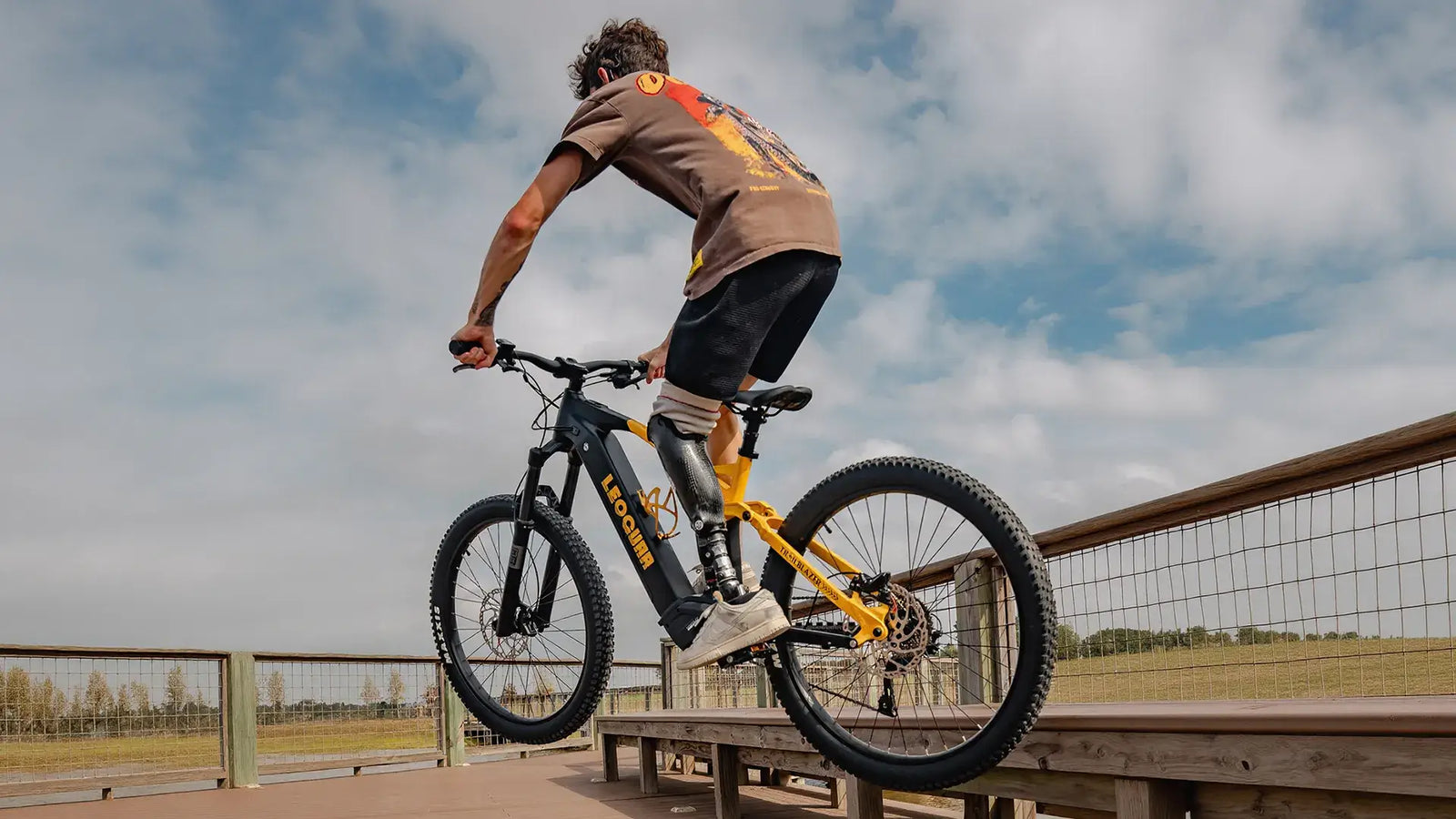
Electric Mountain Bikes vs Regular E-Bikes: Key Differences
Introduction: More Than Knobby Tires
Electric bikes have become very popular. They offer many options that can confuse new riders. You might see two bikes with motors and wonder what makes them different. The main difference is simple but important: an electric mountain bike (e-MTB) is a special machine built to handle rough, unpaved trails. A regular e-bike, like a commuter or hybrid model, is made for smooth roads and bike paths. These bikes are built for completely different purposes.
This difference affects everything from the frame design and suspension to the motor and parts. It goes far beyond just the tire choice. Each type of bike is engineered to work best in its intended environment.
At a Glance: e-MTB vs. Regular E-Bike
Here is a quick overview that shows the most important differences. This comparison highlights how different the design ideas are between an electric mountain bike and a standard commuter or hybrid e-bike.
Head-to-Head Comparison
| Feature | Electric Mountain Bike (e-MTB) | Regular E-Bike (Commuter/Hybrid) |
|---|---|---|
| Primary Use | Technical off-road trails, steep climbs, singletrack | Paved roads, bike paths, commuting, light gravel |
| Frame Geometry | Slack angles, long wheelbase for stability on descents | Upright, comfortable posture for visibility and control in traffic |
| Suspension | Long-travel, robust (front and/or full suspension) | Short-travel front fork, minimal, or often none (rigid) |
| Motor Type | Almost exclusively mid-drive for balance and torque | Often hub-drive for simplicity, but mid-drives are also used |
| Power Delivery | Tuned for high torque, responsive to pedal effort (torque sensor) | Smooth, consistent assistance, sometimes with a throttle (cadence sensor) |
| Tires | Wide (2.4"-2.8"), knobby, aggressive tread for maximum grip | Narrower (38mm-50mm), smoother tread for low rolling resistance |
| Brakes | Powerful 4-piston hydraulic disc brakes with large rotors | Hydraulic or mechanical disc brakes, sometimes older rim brakes |
| Price Range | Generally higher, reflecting specialized components | Wider range, including many budget-friendly options |
The Engineering Deep Dive
These differences are not random choices. Each one is a careful engineering decision made to make the bike work best for its intended use. Understanding why an electric mountain bike is built differently shows the true value of these special machines.
Frame and Geometry: Built for Battle
The frame of an electric mountain bike is built for stability and strength on rough terrain. It has a relaxed head tube angle and a long wheelbase. These features work together to keep the rider stable on steep hills and provide control at high speeds.
This is very different from a commuter e-bike's geometry. Commuter bikes are usually upright and steep to help riders see traffic better and handle easily at slower speeds. The e-MTB frame is also heavily reinforced, especially around the head tube and motor mount, to handle the huge forces from jumps, drops, and constant impacts.
This strong construction is needed to handle not only the terrain but also the extra weight of the motor and battery. Frame materials vary, with aluminum providing a tough and affordable option. Carbon fiber offers a lighter, smoother ride but costs much more.

Suspension: Off-Road Control
Suspension is the heart of an electric mountain bike's off-road ability. It absorbs impacts from rocks, roots, and drops to keep the tires touching the ground for better control and rider comfort.
Hardtail: Has a suspension fork at the front but a solid rear section. This gives a more direct pedaling feel and often costs less.
Full-Suspension: Has both a front suspension fork and a rear shock. This provides the best traction and comfort on the roughest trails.
The key measurement is "travel"—how far the wheel can move to absorb an impact. E-MTBs for trail and enduro riding often have 130mm to 180mm of suspension travel. A hybrid e-bike might only have a fork with 60-80mm of travel if it has suspension at all. This is enough for smoothing out potholes but not nearly enough for serious trail riding.
Motor and Battery: Smart Power
All e-bikes have motors, but the type and setup are very different. E-MTBs almost always use a mid-drive motor. This puts the motor's weight low and in the center of the frame, keeping the bike's balance and handling natural.
A mid-drive motor works with the bike's gears, letting the motor run at its best speed range. This is vital for providing high power on steep, technical climbs. A hub motor, common on many commuter e-bikes, puts weight at the front or rear wheel, which can hurt handling and feel less natural.
The power delivery system is another key difference. E-MTBs use smart sensors that measure how hard you pedal and give matching assistance. The harder you push, the more power you get. This feels natural and gives the precise control needed for tricky trail sections without the motor jerking unexpectedly.
Many regular e-bikes use a simpler sensor that gives a set level of help as soon as the pedals turn, no matter how hard you pedal. This works fine for cruising but can feel jerky and uncontrolled on technical trails.
Wheels, Tires, and Brakes: Critical Contact
The final pieces are the parts that connect you and the bike to the ground. An electric mountain bike uses wide, aggressive, knobby tires designed to dig into loose dirt, mud, and rock for maximum grip. They often run at lower air pressure to increase contact and are built with tough casings to resist punctures.
A commuter e-bike tire is the opposite: narrower, smoother, and inflated to higher pressure to reduce rolling resistance on pavement. Because an electric mountain bike is heavier and travels at high speeds on steep terrain, it needs very powerful brakes.
You will find 4-piston hydraulic disc brakes paired with large rotors (often 200mm or more) on most e-MTBs. This setup provides the massive stopping power and heat control needed for safe, controlled descents. A regular e-bike may use less powerful 2-piston hydraulic brakes or even mechanical disc brakes, which work fine for city riding but would overheat and fail on a long mountain descent.
The Ride Experience
Numbers on paper only tell part of the story. The real difference becomes clear when you ride each bike outside of its intended use. Our experience shows just how purpose-built these machines are.
Riding an e-MTB on Pavement
Using a full-suspension electric mountain bike for a city commute feels wrong right away. The bike feels heavy and overbuilt. The aggressive, knobby tires create a loud, droning noise on the road and produce noticeable drag, making you work harder than needed.
The long-travel suspension, designed to absorb big hits, can feel bouncy and energy-wasting with every pedal stroke unless it has a lockout feature. While it works for getting from point A to point B, it's not enjoyable or efficient. It's like driving a lifted 4x4 monster truck to the grocery store—it gets the job done, but it's the wrong tool for the task.
Riding a Regular E-Bike on a Trail
Taking a typical commuter or hybrid e-bike onto a proper mountain bike trail is a terrible and unsafe idea. The experience quickly goes from uncomfortable to scary. The upright position and steep head angle pitch your weight forward, making you feel unstable and like you might go over the handlebars on even small hills.
The lack of real suspension creates a jarring, bone-rattling ride that punishes your body and offers zero control. The smooth, narrow tires provide almost no grip on loose surfaces, causing the bike to slide out in corners. The brakes, designed for gradual stops in town, feel dangerously weak and will quickly overheat, leaving you with little to no stopping ability when you need it most.
It's like taking a family car on a rugged off-road course—it's simply not designed to handle the terrain.

Which E-Bike Is Right for You?
Choosing between an electric mountain bike and a regular e-bike comes down to a simple, honest look at your main riding needs. Forget the "what if" scenarios and focus on where you will spend most of your time riding.
A Simple Decision Checklist
Use this checklist to find your perfect match.
Choose an Electric Mountain Bike if:
- You plan to ride on dirt trails, singletrack, or forest service roads more than 80% of the time.
- You value stability, traction, and control on rough, unpredictable terrain above all else.
- You see the bike as a tool for outdoor recreation, adventure, and exploring nature.
- Your budget can handle a higher-priced, specialized machine built with durable parts.
Choose a Regular (Hybrid/Commuter) E-Bike if:
- You will be riding mainly on pavement, bike paths, or smooth, well-maintained gravel roads.
- Your main goals are commuting to work, running errands, or fitness rides on predictable surfaces.
- You value rider comfort, pedaling efficiency, and practical features like fenders, racks, and built-in lights.
- You want a versatile, often more affordable, bike for getting around town with the option for easy rides in a park.
Trail Access and E-Bike Laws
Owning an e-bike, especially an electric mountain bike, comes with the responsibility of knowing where you can legally ride. This is a critical and often overlooked part of ownership that can prevent legal issues and ensure you are a responsible member of the cycling community.
Understanding E-Bike Classes
In the United States and many other regions, e-bikes are put into a three-class system. This classification directly affects trail access. The three classifications of e-bikes are generally defined as:
Class 1: The motor helps only when you are pedaling and stops helping at 20 mph. Most e-MTBs fall into this category.
Class 2: The bike has a throttle that can move the bike up to 20 mph without any pedaling needed.
Class 3: The motor is pedal-assist only (like Class 1) but continues to help up to 28 mph.
This is a crucial point for trail riders: most land managers and trail systems that allow e-MTBs only permit Class 1 models. Class 2 (throttle-equipped) and Class 3 (higher speed) e-bikes are typically banned from singletrack trails. Modern e-mountain bikes are almost always designed as Class 1 to maximize trail access.
Always Check Local Regulations
E-bike rules are not the same everywhere; they can vary greatly by city, county, state, and federal land agency. A trail in one park may be open to Class 1 e-MTBs, while a trail just a few miles away may ban them entirely. Before you ride, you must do your homework.
Check the website or contact the local land manager (e.g., State Parks, U.S. Forest Service, Bureau of Land Management) for the specific area you plan to visit.
Conclusion: The Right Tool
The difference between an electric mountain bike and a regular e-bike is a clear case of using the right tool for the right job. One is not better than the other; they are simply designed for different purposes. An e-MTB is a sophisticated piece of recreational equipment, engineered with strong frames, long-travel suspension, and high-torque motors to provide confidence and capability on challenging off-road terrain.
A commuter or hybrid e-bike is a model of efficiency and practicality, designed to make transportation on paved surfaces faster, easier, and more enjoyable. By understanding these basic differences, you can confidently choose the e-bike that will best serve your adventures, whether they happen on a rugged mountain peak or a busy city street.
FAQ
Q: Can I use an electric mountain bike for commuting?
A: Yes, you can use an e-MTB for commuting, but it won't be as efficient as a regular e-bike. The knobby tires create more noise and drag on pavement, and the suspension can feel bouncy during pedaling unless locked out.
Q: What is the main difference between Class 1, 2, and 3 e-bikes?
A: Class 1 e-bikes provide pedal assistance up to 20 mph, Class 2 bikes have a throttle that works up to 20 mph without pedaling, and Class 3 bikes provide pedal assistance up to 28 mph. Most trails only allow Class 1 e-bikes.
Q: Are electric mountain bikes more expensive than regular e-bikes?
A: Generally yes, e-MTBs are more expensive because they use specialized components like robust frames, long-travel suspension, powerful brakes, and mid-drive motors designed to handle rough terrain and heavy use.
Q: Do I need special skills to ride an electric mountain bike?
A: While e-bikes make climbing easier, you still need basic mountain biking skills to safely navigate trails. The motor assistance doesn't replace the need for proper technique, especially on descents and technical sections.
Q: Can I take a regular e-bike on mountain bike trails?
A: It's not recommended and can be dangerous. Regular e-bikes lack the suspension, geometry, tire grip, and braking power needed for mountain bike trails. This can lead to loss of control and potential injury.
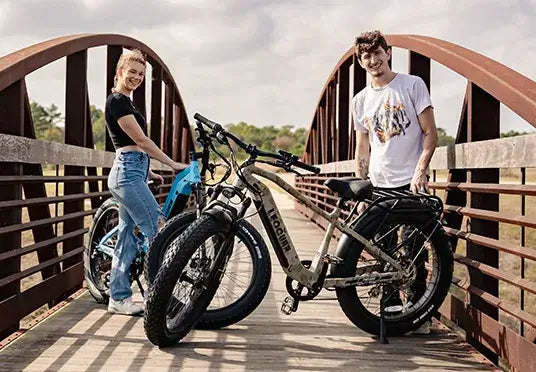
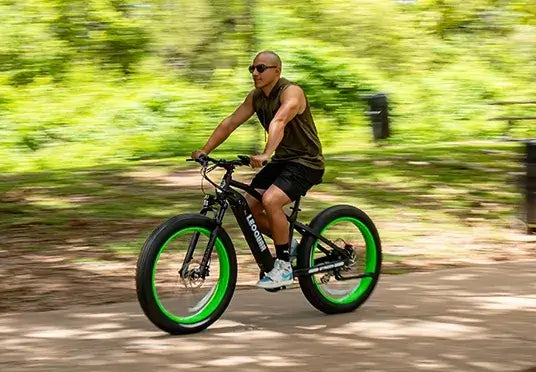
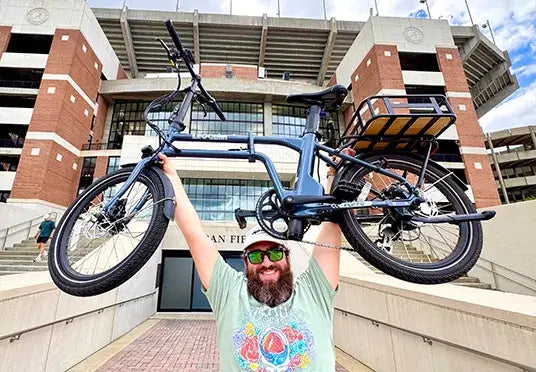
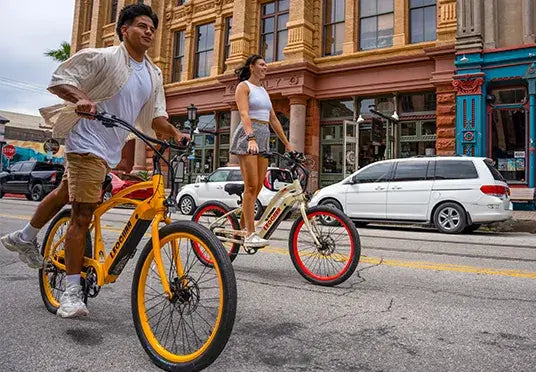
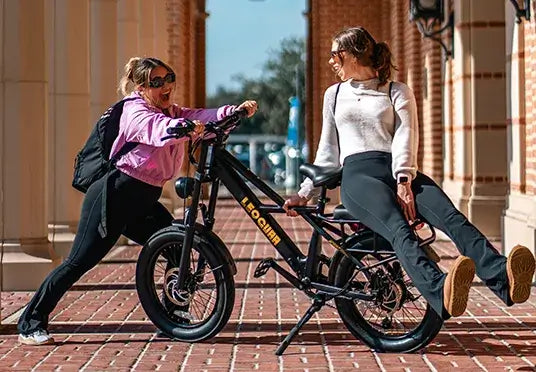
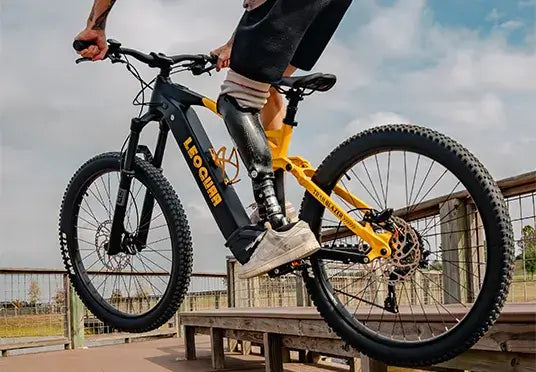































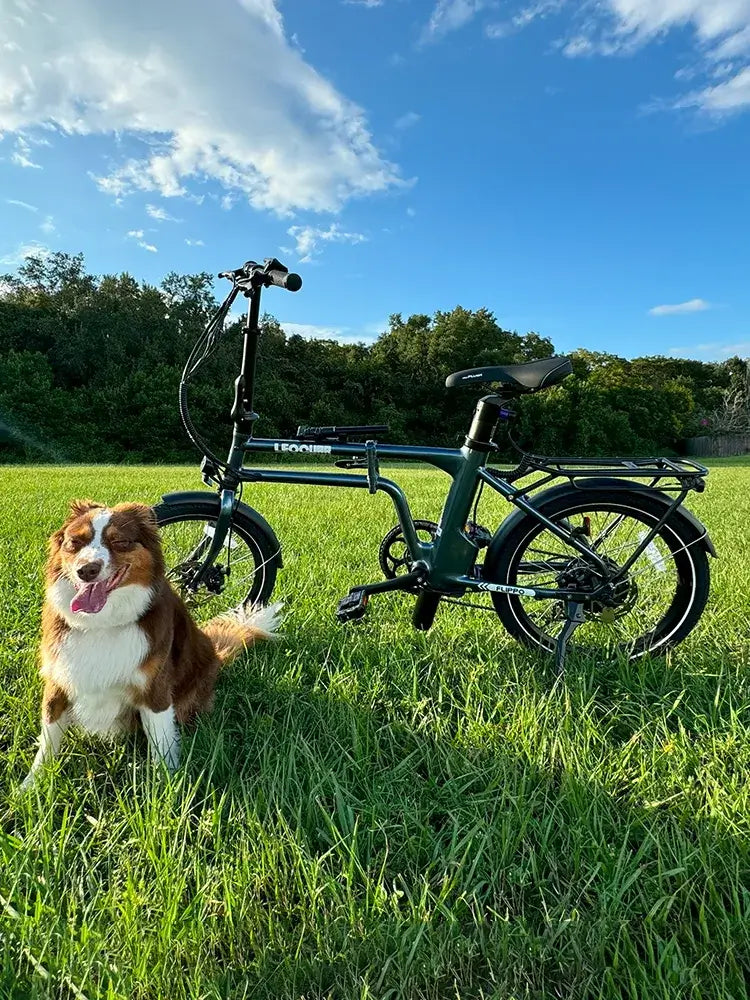










Leave a comment
Please note, comments must be approved before they are published.
This site is protected by hCaptcha and the hCaptcha Privacy Policy and Terms of Service apply.